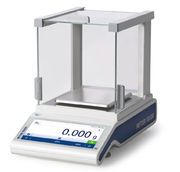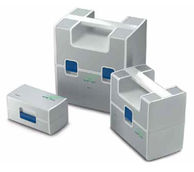Frost: Strategic Analysis of the Opportunities for the Pharmaceutical and Biotechnology Industry in the 'New' EU Countries
Pharmaceutical and Biotechnology Industry in the 'New' EU Countries Presents Considerable Potential, Parallel Imports Remain a Challenge
In contrast to subdued growth in the pharmaceutical markets of the former 15-state European Union (EU), pharmaceutical markets in the 'new' EU accession markets are expanding vibrantly. While the former has been increasing at eight per cent annually, the latter has been growing at the rate of 16.5 per cent over the past five years, offering exciting growth opportunities to pharmaceutical and biotechnology companies.
Globally, the EU healthcare industry is the second largest after North America. Estimated at nearly USD 7.0 billion, the pharmaceutical market in the 'new' EU countries'- Cyprus, the Czech Republic, Estonia, Hungary, Latvia, Lithuania, Malta, Poland, Slovakia and Slovenia- represents about eight per cent of the EU 15 market.
Both Poland and Hungary, which contribute 45 per cent and 23 per cent of the accession countries' total pharmaceutical market value respectively, have been growing by almost 20 per cent since 1998. With 'new' EU countries expected to make significant, long-term investments in order to achieve sustainable systematic changes to their healthcare systems and match EU regulatory standards, growth prospects in the region are expected to be considerable.
Propelled by the twin advantages of low costs and easy patient recruitment, the 'new' EU also offers tremendous scope for conducting clinical trials. Already, large multi-national pharmaceutical and biotechnology companies from Western Europe and from the United States are carrying out clinical trials on rare diseases and diseases relevant to large worldwide markets.
Coordination and swift completion of clinical trials in the new EU have been facilitated by easily accessible, large and relatively under medicated patient populations as well as more structured healthcare systems. An additional advantage has been the availability of highly qualified investigators with lower pay scales than their western counterparts.
Moreover, with hourly wages in the 'new' EU countries pegged at a quarter that of western countries, pharmaceutical companies have been able to avoid their single largest cost: the opportunity cost of a delay in getting a drug to the market. This is particularly pertinent since delays in getting a drug to the market often work out to a daily loss of USD 1 million.
Identifying potential growth segments in the 'new' EU markets, Dr. Raju Adhikari, Frost & Sullivan says, "Mirroring the changing disease burden of the west, the anti-infectives market share has declined, whereas cardiovascular, central nervous system (CNS) and metabolic disease categories have taken over. Huge growth opportunities in asthma and oncology also exist and companies with products in these diverse areas are likely to be more successful in the 'new' EU markets."
However, even as the 'new' EU countries offer exciting prospects for biopharmaceutical and biotechnology companies, parallel trade is expected to remain the key concern. Typically, parallel trade activity occurs in inverse proportion to drug prices with the EU encouraging parallel importers in the belief that parallel trade promotes competition, thereby lowering prices.
With 'new' EU countries having lower average drug prices than Europe's western markets, parallel imports principally follow an east-west channel (with south-north channel to a lesser extent). The east-west parallel trade axis originates from the Czech Republic, Hungary and Poland whose domestic producers meet EU standards and criteria.
Parallel trade is currently estimated at USD 3.8 billion and is projected to last for a minimum of another five years. This practice is expected to wane when there is a single EU25 market - when price differences narrow sufficiently.
Several international drug companies have attempted to tackle parallel trade by applying restrictions to wholesalers, seeking to prevent export using legal loopholes, or removing or reducing the ex-manufacture price differentials of their products across the various EU states. Others, such as Schering AG, have attempted to limit parallel trade through a consistent European pricing policy and setting prices within a narrow band.
"Companies need to present compelling health economic data justifying a product's price and retain premium pricing in friendlier markets," adds Dr. Adhikari. "Further, companies need to upgrade existing approval dossiers in the candidate countries in order to comply with the EU laws- applies especially to domestic companies."
Several market entry issues also confront pharmaceutical and biotechnology companies keen to maximise on the economic benefits offered by the 'new' EU. For instance, with big pharma not dominating the 'new' EU market as it does the EU15 and the United States - the top position in four 'new' EU countries is still occupied by a local participant- acquiring a local company offers a means to gaining a foothold.
























































